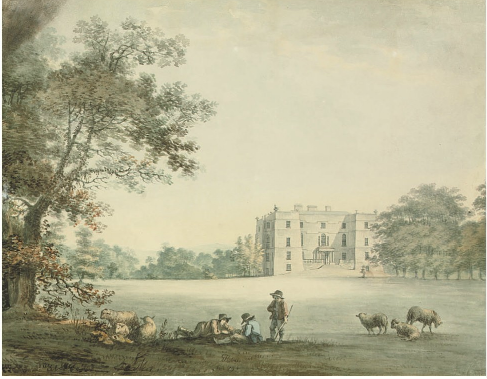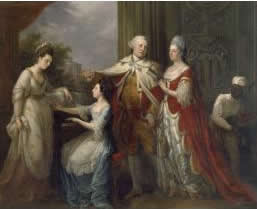Rathfarnham Castle
Rathfarnham Castle was one of a chain of castles built to protect Dublin from attack by Irish clans based in Wicklow in the 16th century.
The building was designed by James Stewart and William Chambers and built in 1583 for Archbishop Loftus. This date has since been confirmed when wood from the roof beams was dated by dendrochronology to 1583
The discovery of secret tunnels beneath the foundations created great excitement in 1987. Designed to protect the family and soldiers from attack, they have since been closed off. One tunnel lead from the Castle to an exit at the present Castle Golf Club and another tunnel lead to the Protestant church in the village

Rathfarnham Castle by George Holmes. 1794
.
Rathfarnham Castle was not built primarily to defend the Pale, but as a comfortable country residence for an ambitious Yorkshire clergyman, Adam Loftus. Loftus quickly rose to become Archbishop of Dublin in 1567, Lord Chancellor of Ireland in 1581, and was closely involved in the establishment of Trinity College Dublin in 1582. He died in 1605 and the Castle remained in the family until 1723.
When the British Civil War broke out in 1642, Parlimentary troops were stationed at the Castle. There is a story that Cromwell held council in the buildings before marching his army to Wexford and Drogheda to kill the natives.
Ownership passed down the centuries to the descendants of Archbishop Loftus until it came into the hands of Philip Wharton. The young Wharton spent his inheritance recklessly and the Castle was sold to William Connolly in 1724. Connolly was a famous politician and renowned for building the Hell Fire Club in the Dublin mountains.
Connolly bought the property for £62,000 but never resided there – preferring to use his residence at Castletown.

A Portrait group of the Earl of Ely with his wife and her nieces by Angelica Kauffman. 1771
The family constructed another entrance to the Castle in the form of a Roman Triumphal arch. The arch is still standing today on Dodder Park Road.
Nicholas' uncle Henry, the Earl of Ely, (left) remodelled the castle and built up a large collection of art and furniture.
In 1812, the Loftus family left Rathfarnham for the last time and moved to Loftus Hall, Wexford. The Castle then passed through the families of the Ropers (1812-1852) and the Blackburns (1852-1912).
Did You Know?
The Earl of Ely was presented with an Eastern slave and ostriches as a gift. The slave is pictured to the far right. After dinner parties, the slave would ride the ostriches around the gardens to amuse the guests!
Property developers, Bailey & Gibson acquired the Castle in 1912 and used large tracts of land to build houses including a golf course.
In 1913, the Jesuits bought the property and the remaining land. One of the Jesuits, Father O'Leary, famously constructed a seismograph at Rathfarnham Castle. The machine could detect earth tremors and earthquakes from across the world and for a time, Rathfarnham became a source of earthquake information for the national media.
In 1985, the Jesuits sold the Castle to Delaware Properties as they no longer needed it as a seminary. The sale caused great concern for local residents who feared that it might be demolished. After immense public pressure to save the building, the state purchased the Castle in 1987.
The Skeleton Story
The skeletal remains of a young woman were discovered in one of the hollow walls on the middle floor in 1880. It is believed that the remains were there for over 130 years. Folklore tells us that a young fair maiden was locked into a secret compartment during one of the famous balls at the Castle. Two suitors were arguing over her love and they decided to sort out their differences by way of a duel. The successor would then rescue the fair maiden from the wall. But as it happened, both died - one from drowning and the other from his wounds. The whole affair was conducted in secret so the beautiful maiden was left there entombed in the wall, where she died.


